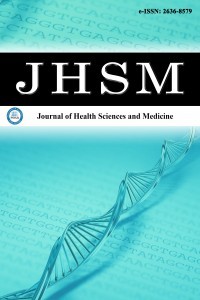1.
Mizumoto K, Chowell G. Estimating the risk of 2019 novel coronavirus death during the course of the outbreak in China, 2020. MedRxiv. 2020:2020-02.
2.
Çağatay A, Arslan Ü, Yilmaz S. The effect of the COVID-19 pandemic on health services. Int Scientif Vocat Stud J. 2021; 5(2):218-229.
3.
Zhou F, Yu T, Du R, et al. Clinical course and risk factors for mortality of adult inpatients with COVID-19 in Wuhan, China: a retrospective cohort study. Lancet. 2020;395(10229):1054-1062.
4.
Kaul M, Gupta P, Kalra S, Gardner J, Gordon HS, Rubinstein I. New domiciliary supplemental oxygen therapy after hospitalisation for COVID-19 in metropolitan Chicago. ERJ Open Res. 2022;8(1):00577-2021.
5.
Hänninen J, Anttalainen U, Kilpeläinen M, et al. Rapid implementation of home oxygen treatment and remote monitoring for COVID-19 patients at the verge of the Omicron wave in Turku, Finland. BMC Infect Dis. 2023;23(1):799.
6.
Organization WH. World Health Organization clinical management of COVID-19: interim guidance (May 2020). World Health Organization. 2020.
7.
Pan F, Ye T, Sun P, et al. Time course of lung changes on chest CT during recovery from 2019 novel coronavirus (COVID-19) pneumonia. Radiology. 2020;295(3):715-721.
8.
Grasselli G, Zangrillo A, Zanella A, et al. Baseline characteristics and outcomes of 1591 patients infected with SARS-CoV-2 admitted to ICUs of the Lombardy Region, Italy. Jama. 2020;323(16):1574-1581.
9.
Ray A, Chaudhry R, Rai S, et al. Prolonged oxygen therapy post COVID-19 infection: factors leading to the risk of poor outcome. Cureus. 2021;13(2):e13357.
10.
Wang D, Hu B, Hu C, et al. Clinical characteristics of 138 hospitalized patients with 2019 novel coronavirus-infected pneumonia in Wuhan, China. Jama. 2020;323(11):1061-1069.
11.
Pathak BD, Upadhaya Regmi B, Joshi S, et al. Oxygen requirement and associated risk factors in post-COVID-19 patients admitted to a tertiary care center: a cross-sectional study. Canadian J Infect Dis Med Microbiol. 2023;2023:3140708.
12.
Osman AM, Farouk S, Osman NM, Abdrabou AM. Longitudinal assessment of chest computerized tomography and oxygen saturation for patients with COVID-19. Egyptian J Radiol Nucl Med. 2020;51(1):255.
13.
Qadir FI, Kakamad FH, Abdullah IY, et al. The relationship between CT severity infections and oxygen saturation in patients infected with COVID-19, a cohort study. Ann Med Surg. 2022;76:103439.
14.
Weerahandi H, Hochman KA, Simon E, et al. Post-discharge health status and symptoms in patients with severe COVID-19. J Gener Intern Med. 2021;36(3):738-745.
15.
Chopra V, Flanders SA, O’Malley M, Malani AN, Prescott HC. Sixty-day outcomes among patients hospitalized with COVID-19. Ann Intern Med. 2021;174(4):576-578.
16.
Serrano MN, Muñoz OM, Rueda C, Arboleda AC, Botero JD, Bustos MM. Factors associated with oxygen requirement and persistent symptoms 1 year after severe COVID-19 infection. J Int Med Res. 2023;51(5):03000605231173317.
17.
Terp S, Reichert Z, Burner E, et al. Characteristics and outcomes of 360 consecutive COVID-19 patients discharged from the emergency department with supplemental oxygen. Ann Emerg Med. 2023;81(1):14-19.
18.
Banerjee J, Canamar CP, Voyageur C, et al. Mortality and readmission rates among patients with COVID-19 after discharge from acute care setting with supplemental oxygen. JAMA Network Open. 2021;4(4):e213990-e213990.

